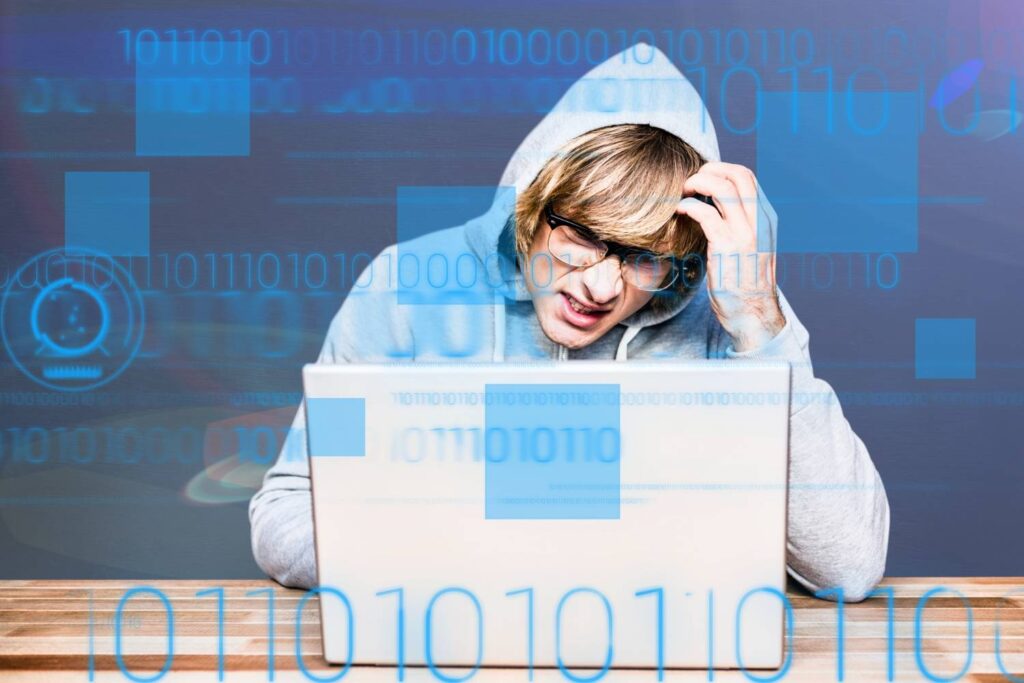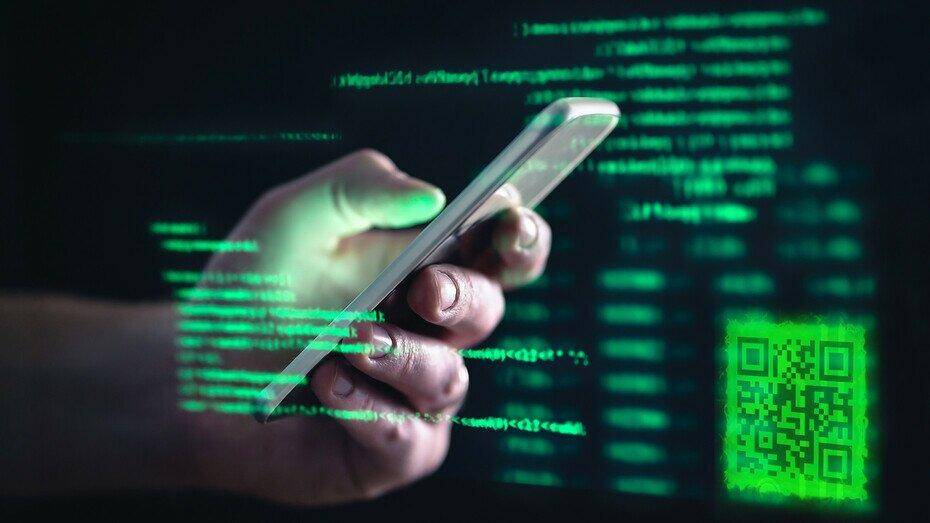In a world where the digital landscape is our new frontier, navigating the vast expanse of the internet is exhilarating. However, shadows that can cast a sinister net over your online experience lurk amidst the shimmering pixels and seamless connectivity. Avoid Downloading Malicious Code becomes more than advice; it’s a critical shield against cyber criminals’ arsenal.
The captivating dance between hackers and security experts rages on, a perpetual tug-of-war where the victor gains access to your data or control over your digital existence. This guide is your armor, offering an in-depth exploration of the ingenious techniques deployed by cyber malefactors, dissecting their camouflage and revealing their intricate traps.
What Is Malicious Code?
We’re going to learn about something called malicious code. Your computer is a special friend that helps you do schoolwork and play games. Well, sometimes, there are bad computer programs made by not-so-nice people. These programs are like sneaky spies that try to get into your computer without you knowing.
Malicious code is like a secret agent, but a bad one. It’s software that’s created to do bad things to your computer or even steal your information. If you had a magic pen that could copy itself and spread to other pens. That’s kind of like what viruses and worms do in computers. They make copies of themselves and mess up your computer’s stuff.
To read more informative articles click here:
10 Types of Malicious Code
Malicious code, or malware, refers to any software or code designed to harm, exploit, or compromise computer systems, networks, and data. There are several types of malicious code, each with specific characteristics and purposes. Here are 10 common types of malicious code:
1# Viruses
Viruses are programs that attach themselves to legitimate executable files or documents and spread by infecting other files. When an infected file is executed, the virus code is also implemented, potentially causing damage to the system, data, or applications.
2# Worms
Worms are standalone malicious programs replicating and spreading across computer networks without user interaction. They often exploit vulnerabilities in software to spread quickly and can consume network resources, slow down systems, and even install other malware.
3# Trojan Horses (Trojans)
Trojans are disguised as legitimate software or files and deceive users into executing them. Once completed, Trojans can perform various malicious actions, such as stealing sensitive information, granting unauthorized access to the system, or providing a backdoor for attackers.
4# Ransomware
Ransomware encrypts a victim’s files or entire system, rendering them inaccessible until a ransom is paid to the attacker. Even if the ransom is paid, there’s no guarantee that the files will be decrypted, and paying the ransom can encourage further attacks.
5# Spyware
Spyware is designed to secretly gather information about a user’s activities, such as browsing habits, keystrokes, and personal information. This information is then sent to the attacker without the user’s knowledge or consent.
6# Adware
Adware displays unwanted advertisements to users, often in the form of pop-ups or banners. While not as malicious as other types of malware, adware can be annoying and impact system performance.
7# Keyloggers
Keyloggers record keystrokes on a compromised system, allowing attackers to capture sensitive information like passwords, credit card numbers, and other confidential data.
8# Botnets
Botnets are networks of compromised computers (often referred to as “bots” or “zombies”) that are controlled by a single entity, the “botmaster.” Botnets can be used for various malicious purposes, including sending spam emails, launching Distributed Denial of Service (DDoS) attacks, and spreading other malware.
9# Rootkits
Rootkits are malicious software packages that give attackers privileged access to a computer or network. They are often used to hide the presence of other malware, making them difficult to detect and remove.
10# Fileless Malware
Fileless malware operates in memory and leaves minimal traces on disk. It can be more challenging to detect and remove because traditional antivirus software often relies on scanning files on disk.
8 Tips How Can You Avoid Downloading Malicious Code?
Avoiding downloading malicious code is crucial to maintaining the security of your devices and personal information. Here are ten tips to help you steer clear of downloading malicious code:
- Source Reliability: Only download software, apps, and files from trusted sources. Stick to official app stores, reputable websites, and well-known software vendors.
- Verify the URL: Check the website’s URL before downloading anything. Malicious actors often create fake websites with similar names to legitimate ones to trick users into downloading malware.
- Read Reviews: Before downloading any software or app, read user reviews and ratings. Genuine reviews can give you an idea of the app’s legitimacy.
- Use Security Software: Install and regularly update antivirus and anti-malware software on your devices. These tools can help detect and prevent malicious downloads.
- Enable Firewall: Use a firewall to block unauthorized access to your device. This can add an extra layer of protection against malware.
- Beware of Email Attachments: Don’t open email attachments from unknown senders, especially if they are unexpected or suspicious.
- Avoid Peer-to-Peer Networks: Be cautious when using peer-to-peer (P2P) networks for downloading files. These networks can expose you to a higher risk of downloading malicious content.
- Download from Official Sources: If you’re looking for specific software, go directly to the official website or app store rather than relying on third-party sources.
How Does Two-Factor Authentication Enhance Your Digital Security?
Two-factor authentication (2FA) boosts online security by requiring two login steps. First, you provide your usual password. Second, you confirm your identity using something like your phone. This extra layer makes it much harder for hackers to get into your accounts. They can’t enter without that second step, even if they know your password.
2FA stops common problems like weak passwords and phishing attacks. With it, you get a unique code on your phone each time you log in. This code constantly changes, so it’s useless to hackers even if they steal it. Also, 2FA links your account to your device, stopping others from getting in even if they know your password. It’s like having a secret code only you and your device know. This keeps your stuff safe online.
Why Is It Important to Take Charge of Your Digital Safety?
Taking control of your digital safety is super important nowadays. Your info and what you do online getting into the wrong hands. This can lead to people using your information without permission or stealing your money. By looking out for your digital safety, you can keep your private stuff private, stop bad things from happening online, and ensure your money and personal info are safe.
It’s not just about you, though. If you’re careful online, you’re also helping your friends and family stay safe. Sometimes, people online can be mean or even scary, but you can do things to avoid that. Did you know that by keeping your digital stuff secure, you’re also helping make the internet safer for everyone? So, taking charge of your digital safety is like wearing a helmet before riding a bike – it’s bright and keeps you safe.
Conclusion
You can navigate the digital landscape with confidence while others stumble in uncertainty. You can thwart the looming threats and champion your digital security by prioritizing source reliability, URL verification, security software, updates, firewalls, and informed decision-making.
Recognizing the perpetual duel between hackers and security experts, this guide’s insights and actionable tips empower you to outmaneuver digital threats. With vigilant adherence to trusted sources, consistent updates, and educational awareness, you establish an impenetrable defense against the multifaceted malicious code landscape.




